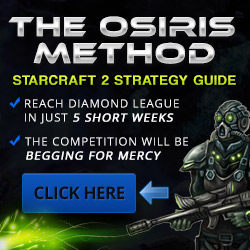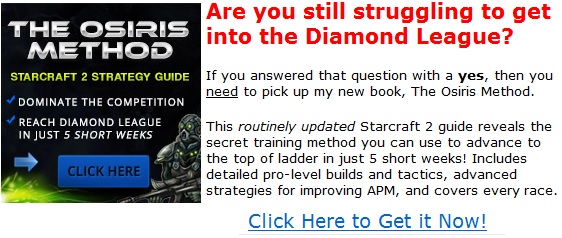Starcraft 2 Protoss Guide - HotS UpdatedStarcraft 2 Guide --> Protoss Guide (you are here)
Protoss Guide Table of Contents For ease of navigation and simplicity, we have split out Protoss guide into 6 primary areas: Protoss Structures Below, you will find an overview of each of the sections of our Starcraft 2 Protoss guide along with links to full articles and guides expanding upon each of these 6 topics. As an example, the Protoss Strategy overview below will discuss the basics of Protoss strategies, whereas the full guide linked to in the overview will go over strategies individually for all three Protoss match-ups. Full Guide: Starcraft 2 Protoss Structures Most players agree that the Protoss race has the most effective method for adding on new structures. Rather than losing a Drone like the Zerg or only being able to produce one building at a time like Terran, Protoss players are able to construct as many buildings as they can afford simultaneously with a single Probe. Rather than constructing buildings, Protoss Probes "warp" in buildings. Once building construction starts, the process completes automatically while the Probe that initiated the warp can go on to perform other tasks like starting more buildings, scouting, or even going back to harvesting resources. The only catch to Protoss building is that all buildings must be placed within range of a "power field". Power Fields are automatically generated by Pylons (or Warp Prisms in Phasing Mode). Since Pylons also increase the Protoss' supply cap, adding on Pylons is not a big inconvenience. However, if all Pylons are destroyed that are powering a given building, the building will go unpowered and be non-functional until a new Pylon is built. Protoss players have several building-oriented abilities. The Nexus can cast the Chrono Boost ability for 25 energy. It speeds up production or research time of the target building by 50% for 20 seconds. The Mothership Core also possesses two Nexus-oriented ability, such as the ability to give the Nexus an auto-attack as well as teleport units to the targeted Nexus. Finally, Warp Gates can summon new Gateway units to within range of a Pylon or Warp Prism, making it much easier for Protoss players to reinforce their army or surprise the enemy with an attack. Full Guide: Starcraft 2 Protoss Units There are three primary things that make Protoss units unique. First and most importantly is the presence of the plasma shield, typically called "shields" for short. Protoss units make use of not just health but also "shields". Shields are additional health pools that are drained as a priority over health. As a Protoss unit takes damage, its shields will decrease as if it were health. Shield totals are reduced in preference to unit life. A Protoss unit will not begin to take life damage until the shields are completely drained. Some units have very low shield pools like the Zealot whereas the Archon has almost all shields and no life. The major upside of the shield is that when a Protoss unit takes damage on its shields, if that unit does not take damage for 10 seconds, its shields will regenerate to full at a rate of 2 shield points restored per second. The Protoss unit may deal damage and still regenerate its shields, it just has to avoid taking damage for 10 seconds. There are two downsides to shields. One is that shields do not benefit from default armor. For example, a Zealot has a default armor of one. When taking damage from a Roach, the shields will drain at the full rate of 18 shields per Roach attack. When the shields have drained, the native 1 armor the Zealot has will quick in, reducing the Roach's damage to 17 per shot. The other downside is that some abilities are strong against shields. Particularly, the Ghost's EMP ability can drain up to 100 Protoss shields from all units in its area of effect while the Widow Mine deals a bonus 35 damage to shields with its primary explosion. The second unique thing about Protoss units is that once the Warp Gate technology has been researched, some Protoss units can be constructed in just five seconds anywhere on the Battlefield that has a power source. After warping in the units, the Warp Gates go on a cooldown before they can warp in more units, but the units they warp in are available even while the cooldown is still under way. This allows the Protoss to start constructing Gateway units and use them in battle just a few seconds later. Finally, the last unique thing about Protoss units is the supply cost. The Protoss player has no offensive 1 supply units. Only the Probe and the Observer cost 1 supply. Unlike the Terran and Zerg which have access to low supply units like the Marine and Zergling, Protoss Gateway units cost 2 supplies each. Full Guide: Best Protoss Army Compositions Of all the races, Protoss players have the least number of viable unit compositions, especially in the late game. This may sound bad at first, but the reason there are so few effective army compositions is not that Protoss units do not mix well but rather that they all mix extremely well! Unlike other races which typically focus on 3-4 unit types to form the bulk of their army, it is not uncommon for late game Protoss armies to use 7 or 8 different unit types as part of their army. For example, a well balanced and incredibly hard army to stop for opponents of all races in the late game is a varied army consisting of some Zealots, Stalkers, Sentries, Colossi, Void Rays, Tempests, High Templar, and Archons. No other race uses this wide variety of units. This is not to say that Protoss armies cannot effectively use less unit types. It is perfectly viable for Protoss players to focus fully on air or timing attacks with Gateway units or Gateway units in conjunction with 1 advanced technology tier. Full Guide: Starcraft 2 Protoss Strategies The Protoss race is quite flexible in their strategy choices. Protoss players have the option of going for both very aggressive as well as very economical openers. Protoss players can make viable attacks off of one base or can go for quick expansions just as easily. The introduction of the Mothership Core in Heart of the Swarm has made it easier than ever for Protoss players to both put out early pressure as well as defend an early expansion. Most top tier Protoss players opt for one of three major gameplans: early rushes, mid-game two base timing attack, or the late-game "deathball" approach. Early rushes are common against Terran and Protoss and typically involve the Mothership Core, a Stalker or two, and other Gateway units. Oracles work good versus Terran players as well. Two-base timing attacks tend to involve a quick expansion into a pre-ordained attack using a large number of Gateway units (possibly with upgrades). The support of a single high tier tech path may be involved. Typical high tier units for such timing attacks are Immortals, Archons, or Void Rays. Unlike the other races, you never see a mid-game timing push with the Protoss player on three bases. The trickiest time for the Protoss player in any match is the establishment of the third base. Once a third base has been established, it is very difficult for the Protoss player to defend all their fronts from sneak attacks, drops, and faster enemy units. As a result, Protoss players rarely grab their third expansion if they want to attack in the near future. Once taking a third base, they typically wait until their upgrades and army sizes have increased significantly before making attack in order to prevent losing the third base. Protoss units tend to be the slowest and least mobile of all the races. Protoss players have to make up for this weakness by getting reinforcements around the map by warping in units with Warp Gates. Having a network of proxy Pylons (i.e. hide Pylons everywhere) around the map really helps the Protoss player to defend and reinforce all attack fronts and expansions they may have around the map. Full Guide: Protoss Build Orders What the Protoss lacks in variety of army composition, they more than make up for with the sheer number of viable build orders. Protoss players have a large number of openers available to them, some of which are quite specific to the race of their current opponent. For example, there are many Protoss build orders that work great against Zerg race but are useless against Terran and Protoss players. Protoss players can open with the Forge Fast Expand strategy against Zerg players in order to grab a safe early expansion, but this tactic is not viable against Terran or Protoss. Likewise, the Protoss player can go for an Immortal and Sentry timing attack against Zerg, but this build is not particularly strong against Terran or Protoss forces. Finally, the Protoss player can instead opt for early Phoenix against Zerg, a strong build, but once again not viable against Terran or Protoss players. Due the number of builds available to Protoss players (and the variety between these builds), it is recommended that you take extra care to learn multiple builds, even if you are new. Even new Protoss players should master 1 build for each race match up. Full Guide: Starcraft 2 Protoss Tips There are a lot of great tips and strategies that do not fit into any other aspect of this Starcraft 2 Protoss guide. In the Protoss tips section, we reveal our top 10 (and counting) tips that can help you win games of Starcraft 2. Here is one tip regarding the use of Guardian Shield, an excellent skill that reduces ranged damage but is often overlooked by novice players. Since Guardian Shield is only active while the Sentry casting it is alive, you want to make sure you have multiple Sentries casting Guardian Shield at the same time. Having multiple Sentries use this skill prevents a good opponent from focus-firing a single Sentry using Guardian Shield. Since Guardian Shield lasts 15 seconds and has a 15 second cooldown, you do not have to worry about double-casting it with a single Sentry. Whenever the battle starts, select your Sentries and quickly tap "G" a couple of times. This will make the selected Sentries use Guardian Shield without having to worry about the Sentry casting it twice in a row, wasting valuable energy. Summary Over time, we will be expanding this Protoss guide with more tips, strategies, and builds. Be sure to check back regularly for new guides and updates! |
Don't be shy - share this page on G+ and Twitter!
Sign up for my Free Starcraft 2 Mini-Course where I reveal my best strategies not seen anywhere on this site!
Starcraft 2 Strategy Guide Privacy Policy Contact Us Disclaimer
©2013 www.osirissc2guide.com

